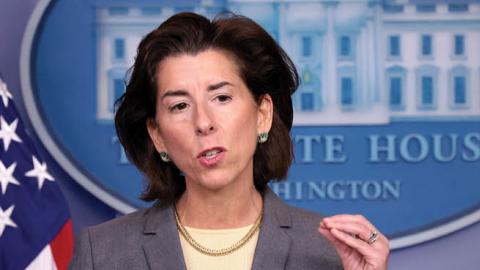The White House is teeing up its comprehensive Indo-Pacific economic framework to launch in 2022. While details about the framework are scarce, the framework doesn’t appear to be very comprehensive at all.
For a couple of months now, Commerce Secretary Gina Raimondo has been teasing that the Biden administration plans to develop a framework that touches on everything that’s of shared interest for America. This basically means anything under the sun. Secretary of State Anthony Blinken recently added that the framework will include topics such as technology, supply chains, infrastructure, climate change and more.
But there is still a missing element: America’s trade policy. Although officials may pander to critics that customs standardization is trade policy (and yes, it is important), it’s not the in-depth trade liberalization for which critics of the framework and allies in Asia are looking. The fact that the secretaries of Commerce and State are leading the development of this framework, while the U.S. Trade Representative takes a backseat role, says a lot about what’s being left out.
The Biden administration would be wrong to not take a leadership role in pursuing a more progressive trade policy in addition to the framework; otherwise, this framework is at risk of simply becoming another glorified development-assistant program similar to those of past administrations. Of course, there are many questions about the Biden administration’s trade policies that remain unanswered, so it’s not hard to wonder why trade is excluded from this comprehensive framework.
The administration wants to pursue more equitable trade, better workers’ rights, and so on, but what in these efforts really offers a competing alternative to the Trans-Pacific Partnership? For that matter, where is the competing alternative to China’s economic opportunities? What does the administration plan to do now that the U.S.-China trade deal is nearing the two-year mark? What about the unfinished U.S.-Japan trade agreement? Will the Biden administration sit quietly by, with the hope that these deals will be forgotten, just as it watched the Trade Promotion Authority expire over the summer? Our allies in Asia and folks in Washington want to know.
The Biden administration has done well in mending some trade and diplomatic quarrels that the Trump administration started. But, what’s next?
For example, the Biden administration has been good at engaging with Taiwan — whether it’s through low-level trade and investment talks or through a relatively new economic prosperity dialogue — to help defend against coercive actions by China. But inaction on building something greater, such as a U.S.-Taiwan free trade agreement, almost set back economic relations after a controversial vote in Taiwan on whether to reimpose restrictions on American imports of pork and beef. Thankfully, the people of Taiwan voted against these restrictions.
Perhaps the Biden administration doesn’t want to move on any new trade deals because it knows it will have a hard time convincing Congress to agree — and political capital can be scarce when trying to pass a budget. At the same time, lawmakers in Congress won’t act either because they’re waiting for direction from trade negotiators in the White House. Talk about passing the buck! Trade policy in Washington has become a catch-22. And it’s why leadership on trade issues is more important than ever.
Many of the initiatives under the new Indo-Pacific economic framework are worth pursuing, such as coordinating the development, deployment and restricting of new technology, standardization and digitization, new infrastructure projects, energy diversification, and so on. And of course, our Asian partners will welcome as much U.S. spending in the region as they can get.
But don’t expect those in Asia to get excited over a framework that is merely recycled and rebranded projects already ongoing in government. Asia wants more. America wants more. Trade liberalization must be a bigger component of any comprehensive economic framework.
Read in The Hill




















